Ahh, Cape Town. What can I say?
She gets top honors for my favorite city in the world. Why? Because she has what no other city has, everything! First, this picturesque city sits at the footsteps of the impressive natural wonder, Table Mountain [insert link] (go here for an aerial view of the city), and framed by a stunning white sand beach coastline – grab your swimsuit or rent a surfboard! Want to take a hike? You got it. Head to Lion’s Head or Signal Hill. Care to do a little cage diving with Great White Sharks? Yeah, she has that too. What if you feel like something more refined, like wine tasting? The Cape Winelands region is just a short drive away. Wine in South Africa? Yep, that’s right! There are great vineyards here. History? Take a ferry to Robben Island and see Nelson Mandela’s cell. But wait, there’s more! South Africans are quite possibly the greatest wealth of their nation. The Mother City is home to an inviting, multicultural bunch who smile freely and are always eager to engage their visitors. So get out there and talk to the people. You’ll be welcomed by their heartfelt embrace. Check out the up and coming Bo-Kaap neighborhood. Visit the townships and meet the people who are the root and soul of their city.
Cape Town is quick to steal your heart from the moment you arrive. It’s the combination of its people, vibe, views, colors and beauty that all together make up the pure magic that is Cape Town. You’ll fall hard for the fun-loving South African accent, and you might even catch yourself testing out your accent skills! Upon parting, you’ll find that you leave a piece of yourself behind, hoping to one day return again. So, when you’re in Cape Town, be on the lookout for my heart – that’s where I left it.
Table Mountain
Tips
- It can be very windy and chilly at the top of the mountain so bring a jacket and gloves to stay warm.
- Try to go to the top of the mountain on a clear day as cloudy days can obstruct the view of the surrounding city.
- Note that the cable car can be closed on days when there are strong winds.
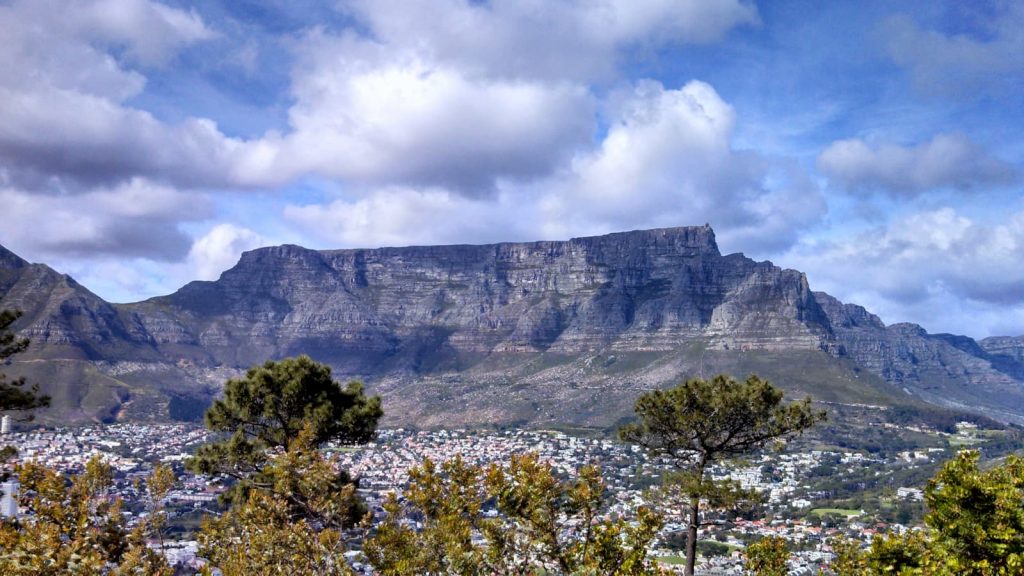

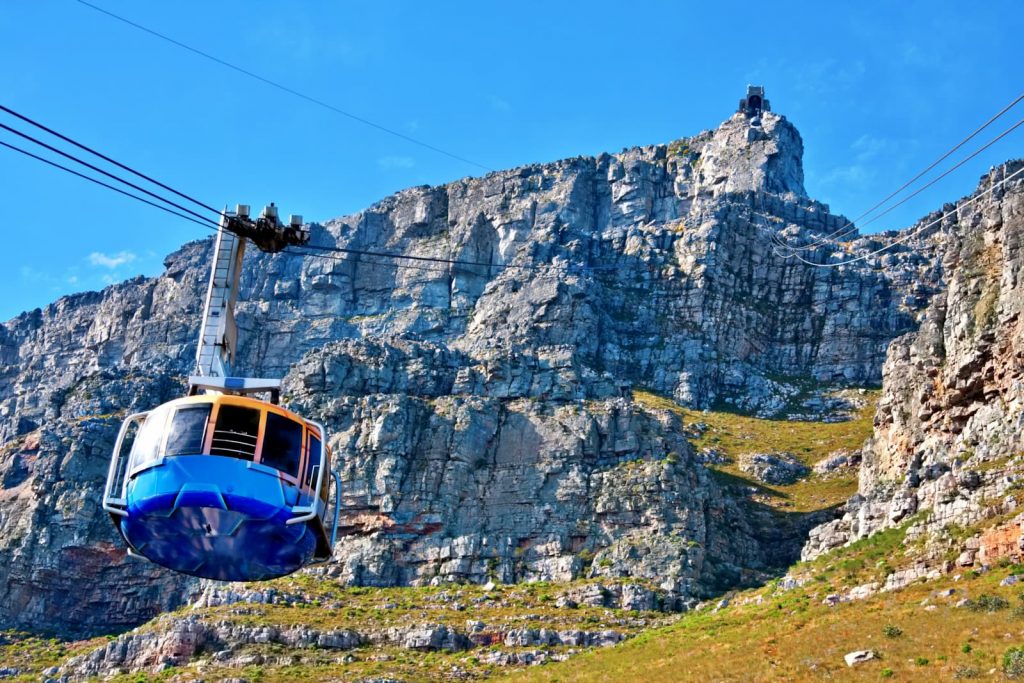

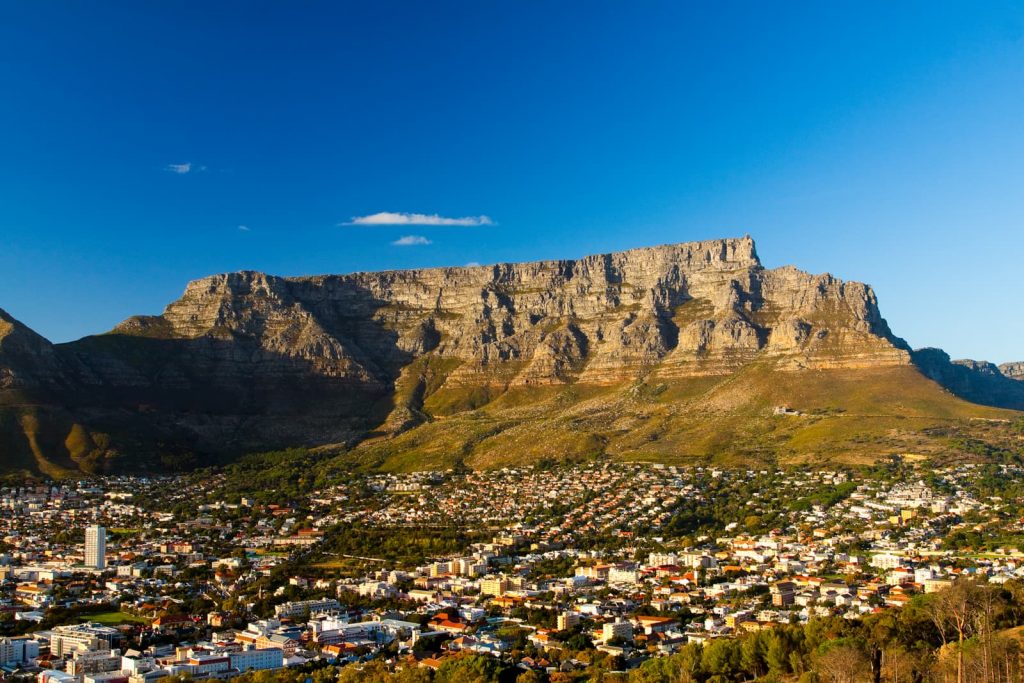
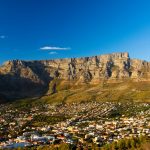
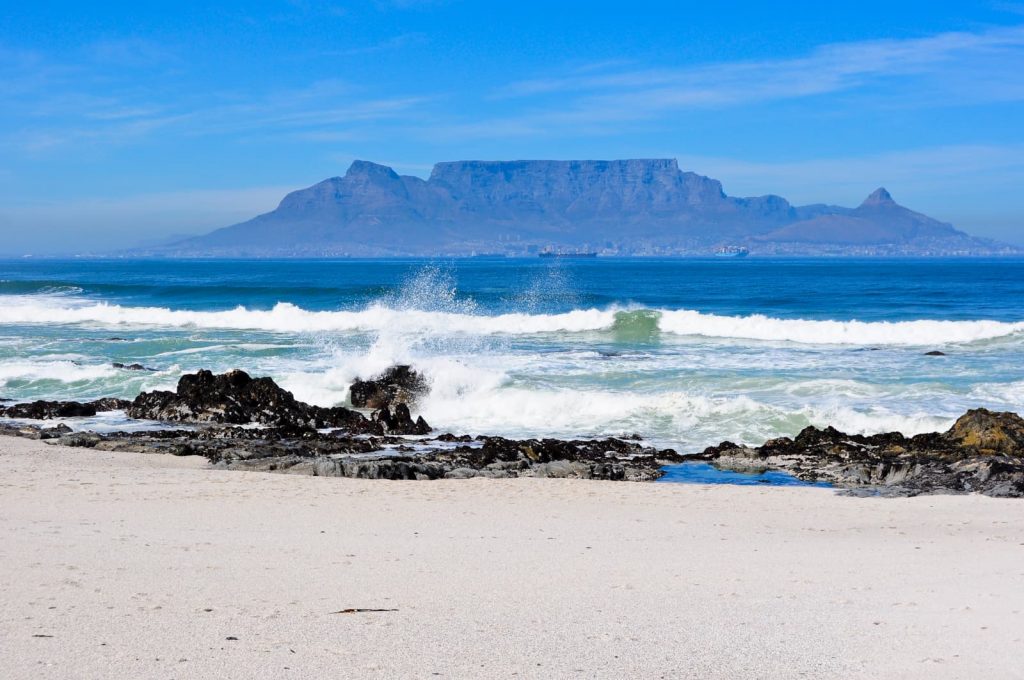

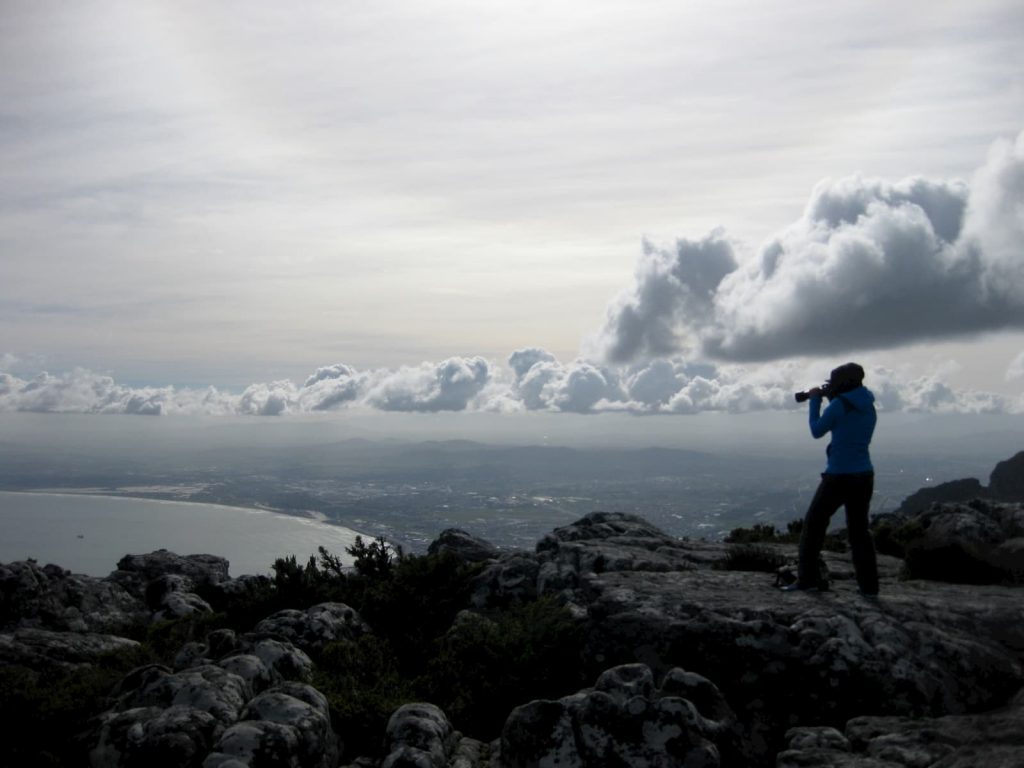

Lion’s Head
Perched 2,200 feet (670m) above Cape Town stands the unusually shaped mountain known as Lion’s Head. It’s a fairly easy ascent to the top with amazing, sweeping views of the city and surroundings. It’s approximately a 2 hour hike that features a trail that circles around the mountain but at times can become quite steep so do use caution. The 360 degree, uninterrupted views of the city bowl, Twelve Apostles, Camps Bay, Atlantic coastline as well as Table Mountain will surely impress as you make your way to the peak. Whether you decide to hike the mountain during the day or wait to see the incredible sunsets, Lion’s Head is a great way to experience the outdoors side of Cape Town. Hiking during the full moon is also popular. Keep in mind, if you want to.
Tips
- Take the less risky “recommended” route to the top unless you want the added challenge of living on the edge (somewhat literally). Look for the green sign that distinguishes between the “recommended” route and the route with “the chains.” The chains are not suitable for children or the elderly. Always use caution while hiking.
- There is a parking lot at the foot of Lion’s Head that you can either drive or take a taxi to.
- For a crazy view of Table Mountain and the Twelve Apostles from a cave on Lion’s Head, find Wally‘s Cave on the hike up.
[Note that the hike can be tricky and nerve wracking in spots. Use caution and your own discretion if you decide to make the trip to Wally’s Cave.]
Click here for how to find Wally’s Cave
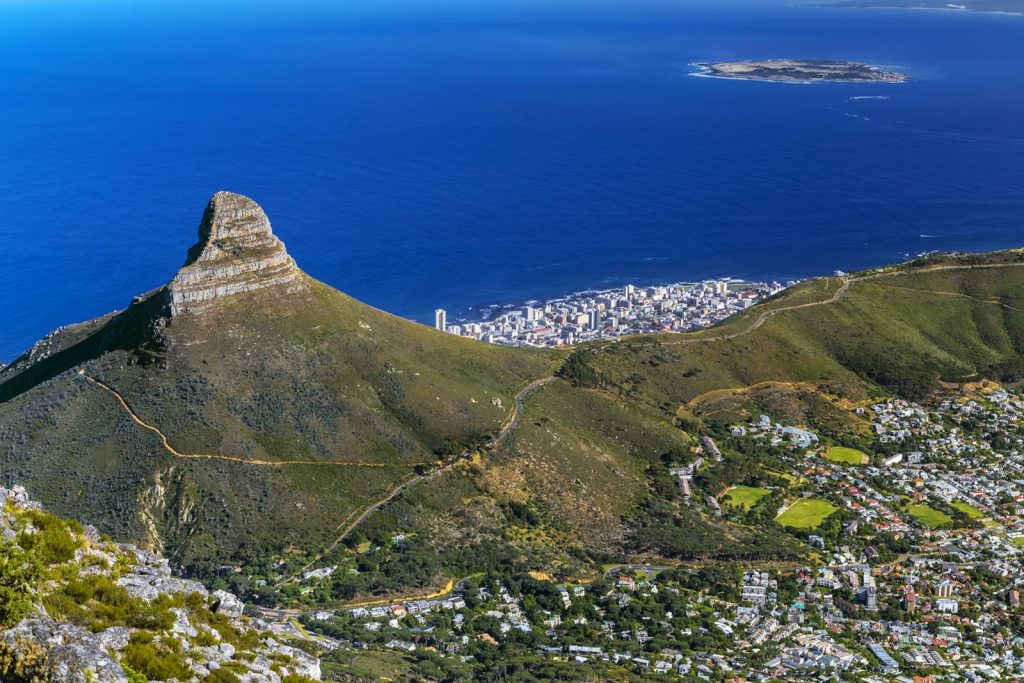

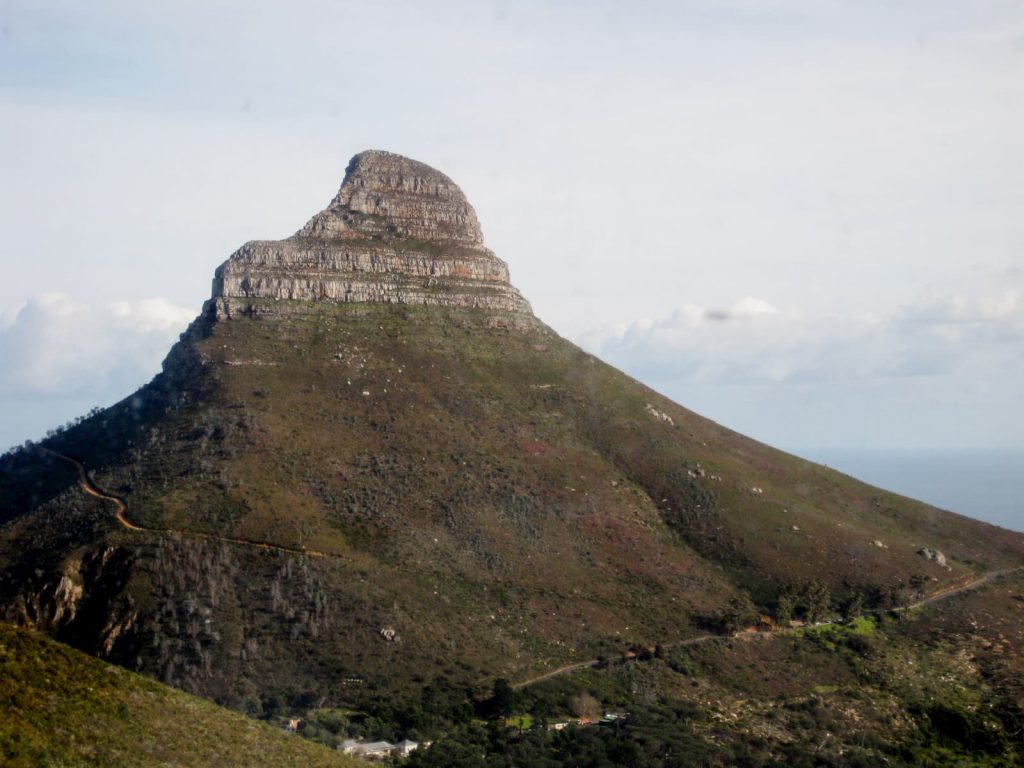



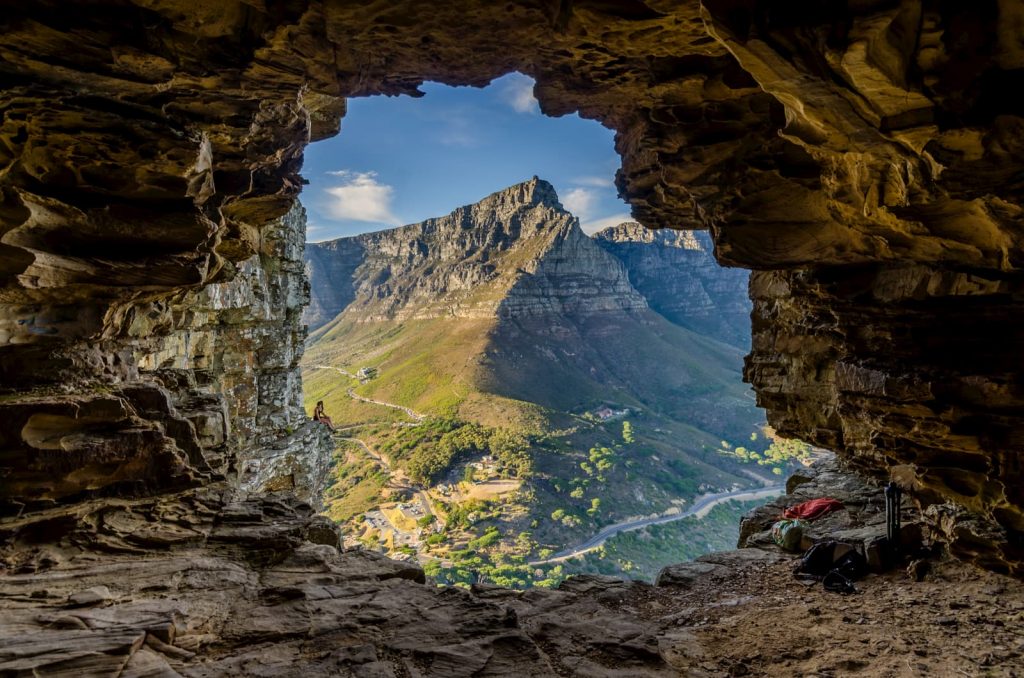

Signal Hill
Don’t feel like hiking but still want the views? Just a short 5 minute drive from Lion’s Head stands Signal Hill, one of the best spots in Cape Town to view the sun going down as well as offering some of the best views of the city. Known to locals as the Lion’s Rump, its shape resembles a sleeping lion as it connects to Lion’s Head. Back in the 17th & 18th centuries, Signal Hill was used as one of three lookout posts. It was here where farmers who sold their harvests would be alerted to the new ships making their way into the harbor. A clear day will allow for an optimal viewing experience, and be sure to pack a picnic and engage in a local tradition while taking in the great views across the City Bowl and Table Bay!
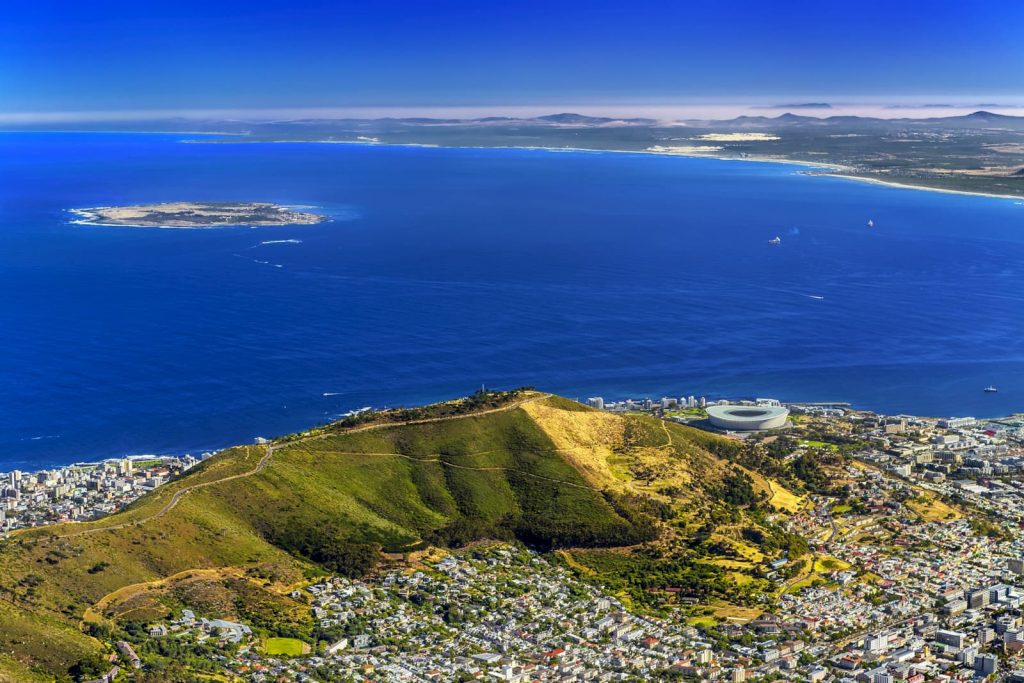
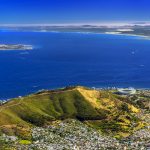
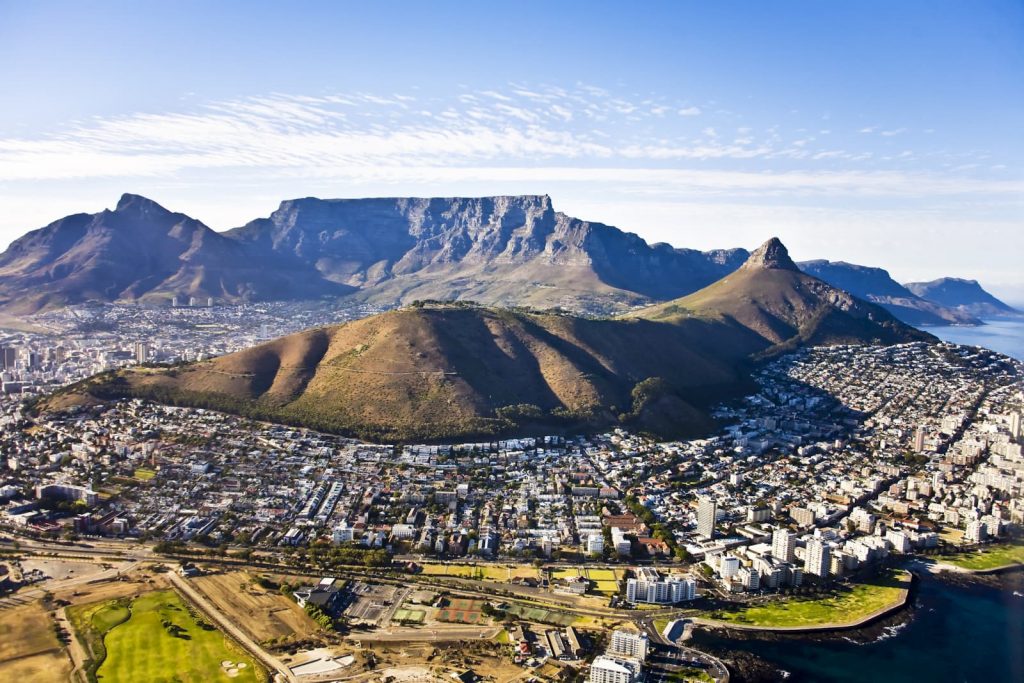
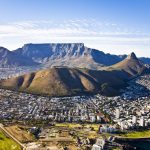
Robben Island
Located in Table Bay, just off the coast of Cape Town lies Robben Island. Since the end of the 17th century through the 1990s, Robben Island has had a somber history as both a prison for political prisoners as well as a hospital for the unfortunates who were deemed socially undesirable. The island is most famous, or rather infamous, as the holding place where Nelson Mandela served 18 of his 27 years of incarceration. Now a UNESCO World Heritage Site and museum, Robben Island offers daily tours that are uniquely guided by a former political prisoner who offers compelling insight into the island’s rich history. Discover a unique part of South Africa’s history in this unforgettable and eye-opening experience.
Tours last 4 hours, including ferry rides, but don’t expect to just hop on the next boat over there. You would be advised to book well in advance as spaces fill up quickly and often sell out. “A symbol of the strength of the human spirit over adversity,” Robben Island is a soul touching experience that’s not to be missed. Hours & Duration: 4 hrs including ferry rides (30 min. each way); 7 days a week; Ferries depart at 9am, 11am and 1pm (weather permitting)
Tips
- The tour begins at the Nelson Mandela Gateway at the V&A Waterfront with a multimedia exhibition, museum shop and restaurant, after which, guests hop onto the ferry for a scenic trip to the island.
- Comfortable walking shoes, sunscreen and warm clothing are advisable on the boat trip and those prone to seasickness should take the correct precautions.
- Passengers must arrive no later than 30 minutes prior to the scheduled times of departure, failure to do so could result in the forfeit of your paid ticket. Boarding gates close 10 minutes before departure time and there will be no refunds or rescheduling of boats if the departure times are missed.
- Robben Island Museum will only refund tickets due to adverse weather conditions or where the ferry is experiencing operational difficulties. An application can be made for a refund if the visitor could not attend the trip due to hospitalization or mortality. Refunds will be affected in the original tender type on the day of cancellation. Any refunds claimed after that day will be transferred into the Client’s bank accounts, within 48 hours, as stated.
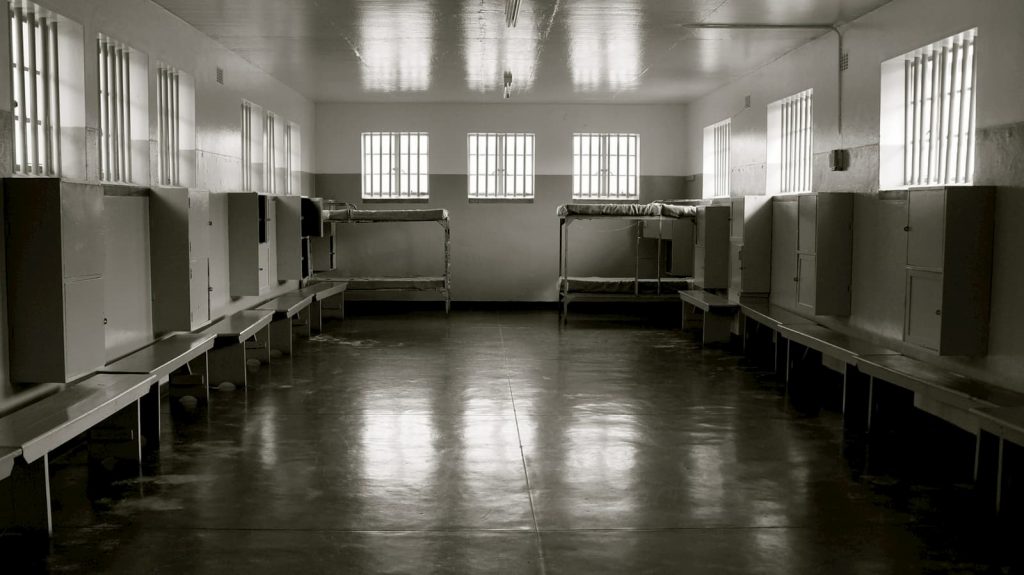

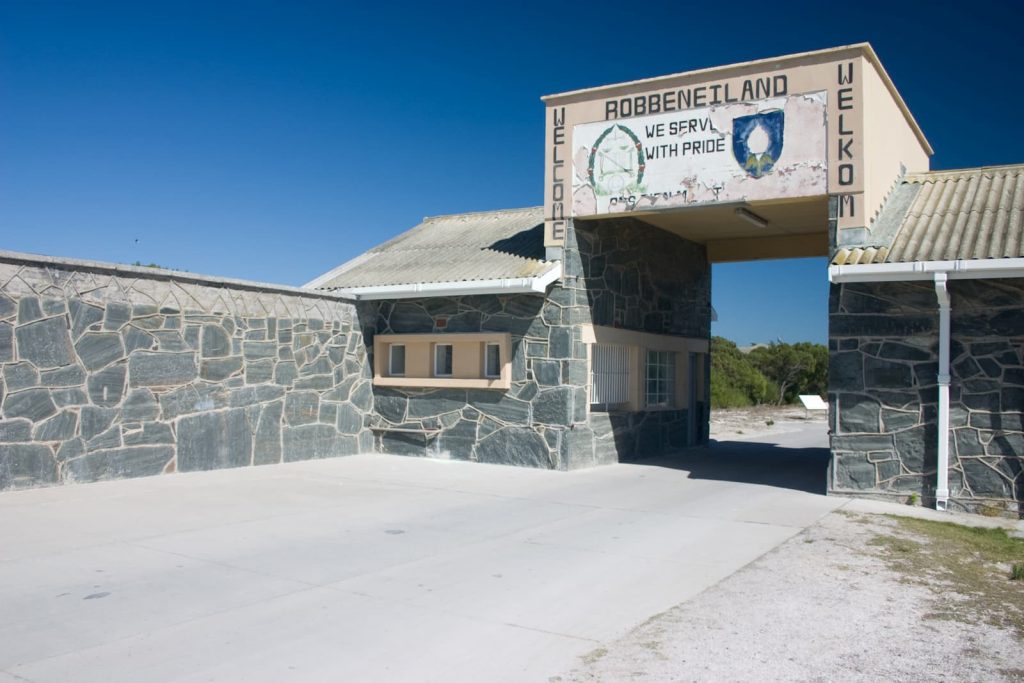

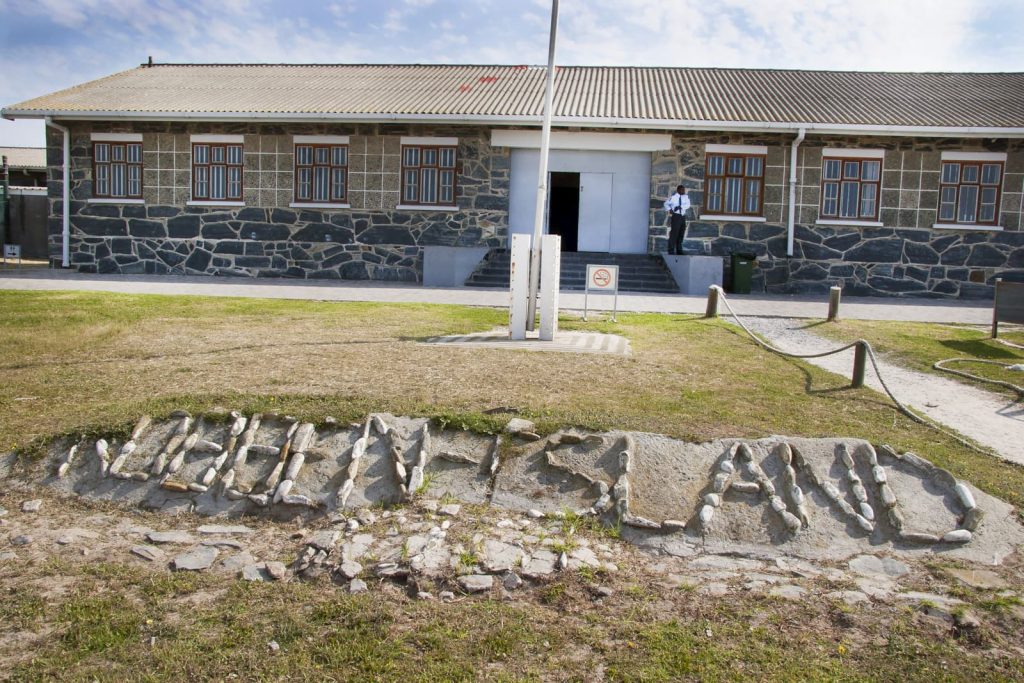

V&A Waterfront
Located on the coastline of Cape Town between Robben Island and Table Mountain, sits the V&A Waterfront (named after English Queen Victoria and her second son, HRH Prince Albert). Attracting more than 23 million visitors a year, the Waterfront is a vibrant place of entertainment in the heart of Cape Town’s harbor. Offering a staggering variety of 80 different eateries, it’s safe to say the V&A Waterfront is home to so me of the best restaurants in Cape Town. So how do you choose? Your guess is as good as mine! After settling on an eatery, stroll through the Waterfront while experiencing live music and take in a little retail therapy at some of the 450 diverse shops that are sure to offer something for everyone!
There are several little museums sprinkled throughout the Waterfront as well. Want to see all this hub of activity from a bird’s eye view? The Waterfront’s 50m high Cape Wheel will deliver 360 degree views from above of the surrounding areas that are not to be missed! Not into heights? There are several boats that offer cruises around the harbor as well as trips to Robben Island. Whether you just have an hour or four hours to spend, the Waterfront is sure to fill out your itinerary with a variety of activities!
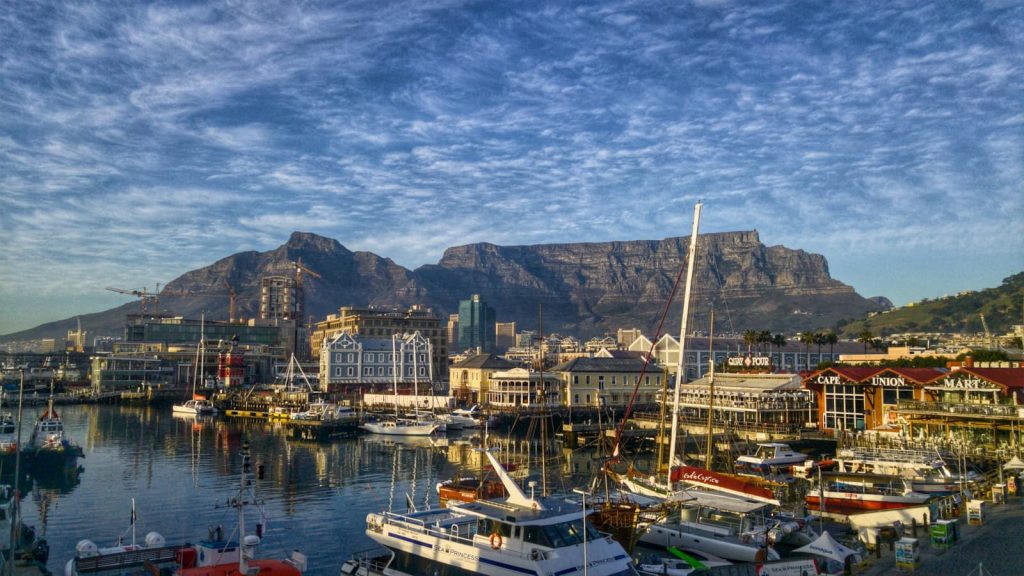
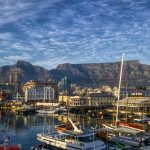
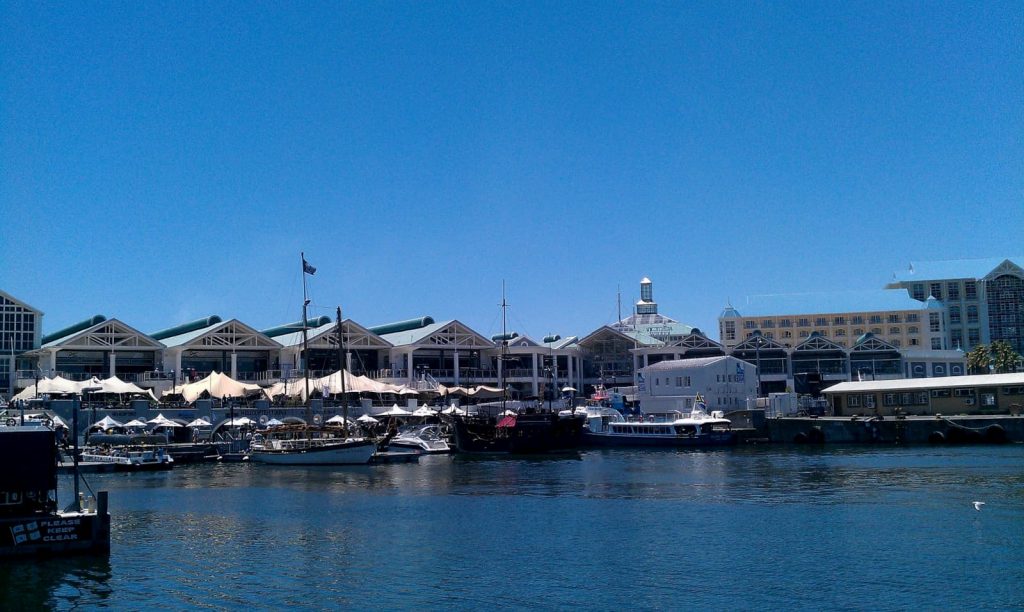
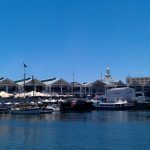
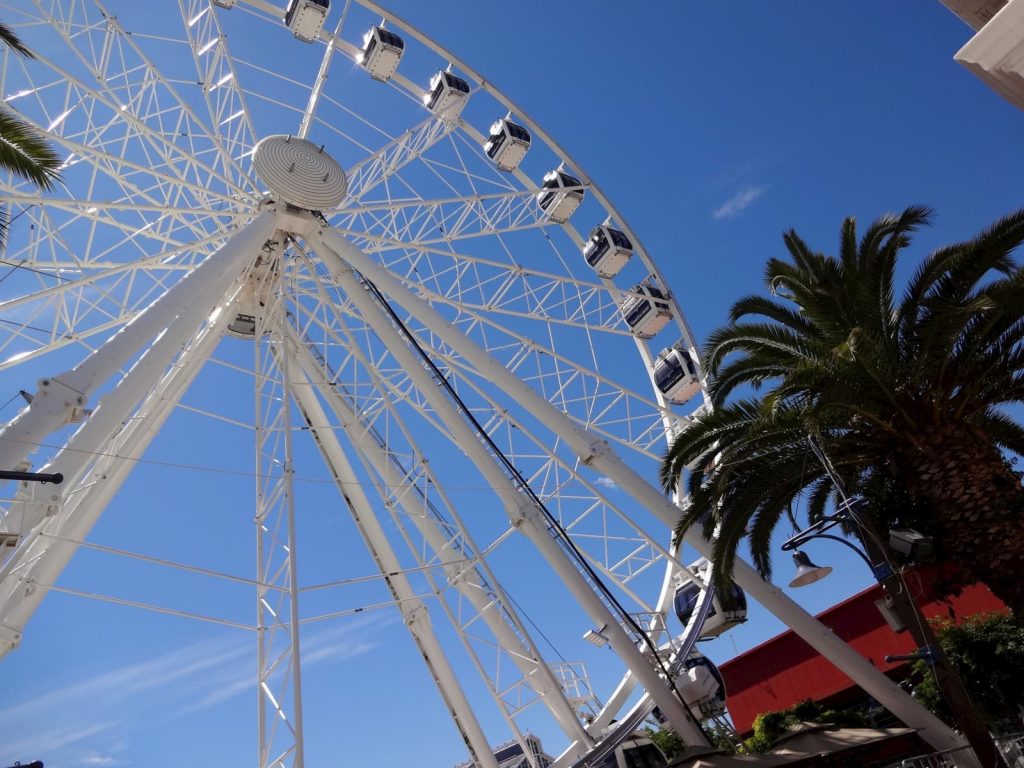

Kirstenbosch Gardens
Just a short drive from Cape Town is yet another must-see attraction on the eastern brim of Table Mountain National Park, the Kirstenbosch Botanical Gardens. These stunning gardens hold the title of being the first botanical garden to ever be declared a UNESCO World Heritage Site. Manicured lawns and spacious winding trails will lead you through a showcase of over 7,000 varieties of plant species, including South Africa’s indigenous flora and its national flower, the protea. A must for any nature buff! Keep those cameras handy, the extensive gardens are a photographer’s dream for both professionals and amateurs alike. If you want to see the gardens in full bloom, mid-August to mid-October would be the prime time to visit.
So relax, enjoy and take in this peaceful slice of paradise, and if you’re like me you’ll leave apologetic towards the potted plant back at home that has had to be revived countless times!
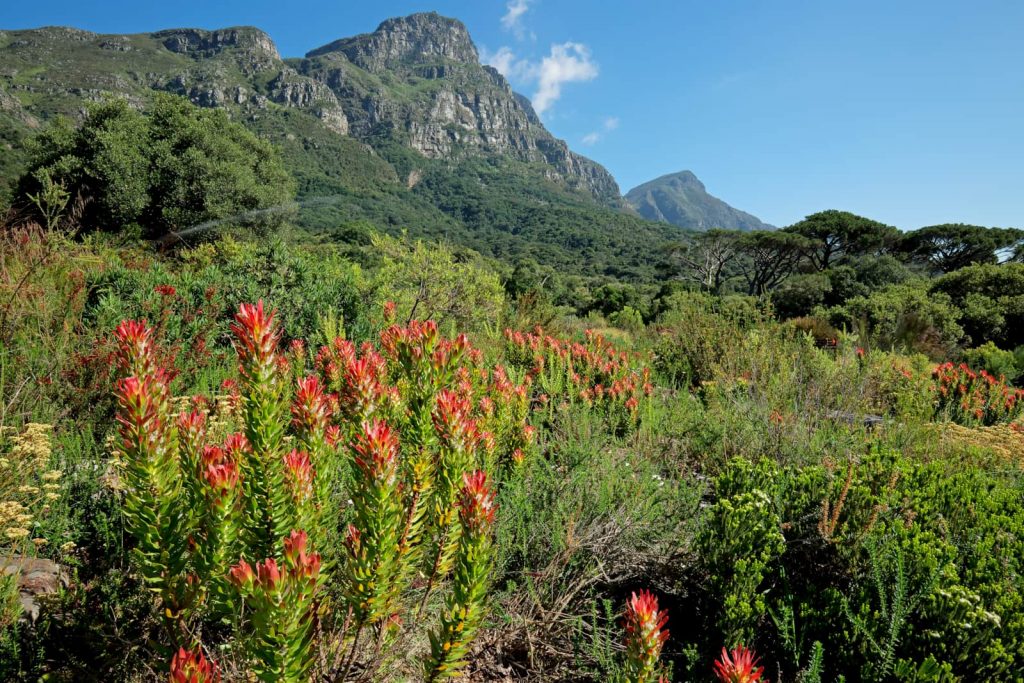
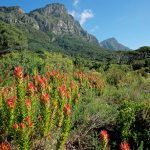
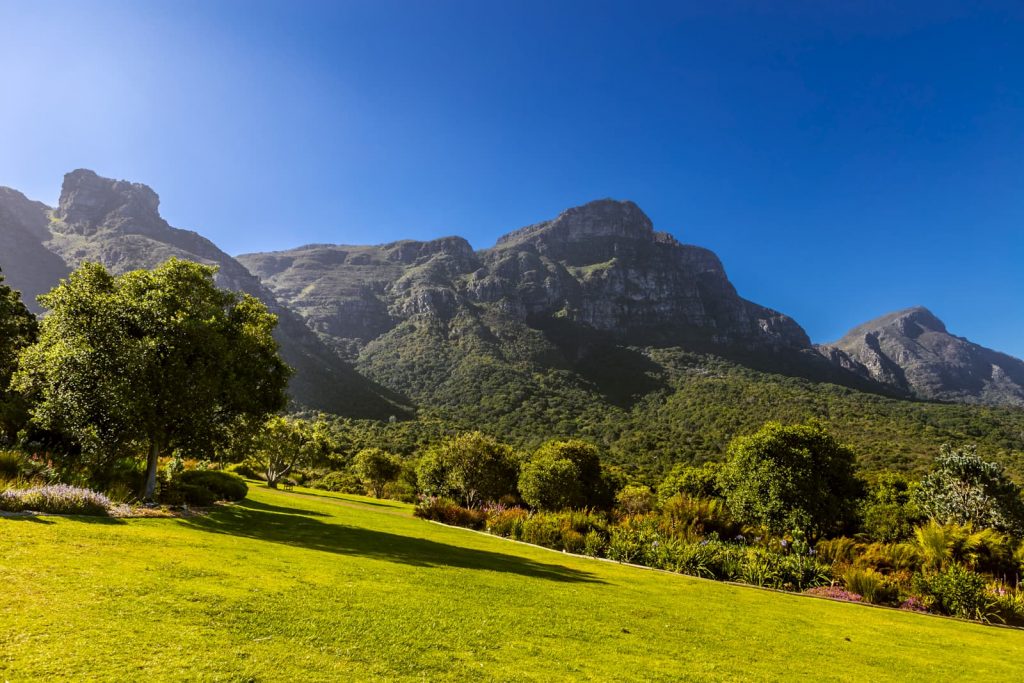
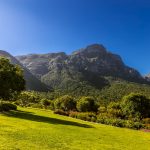
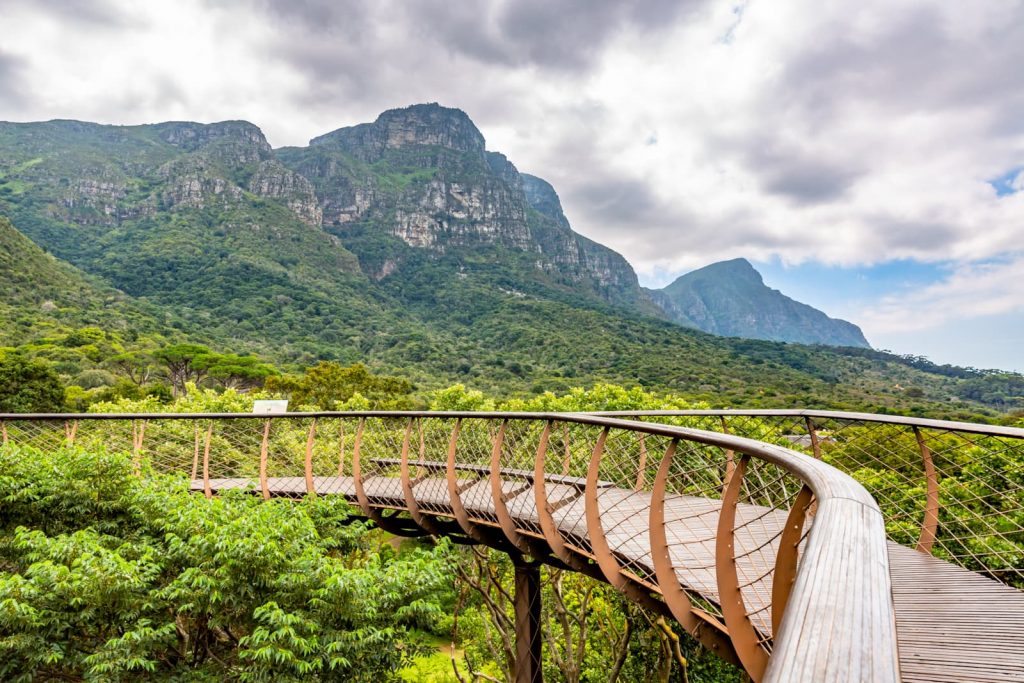

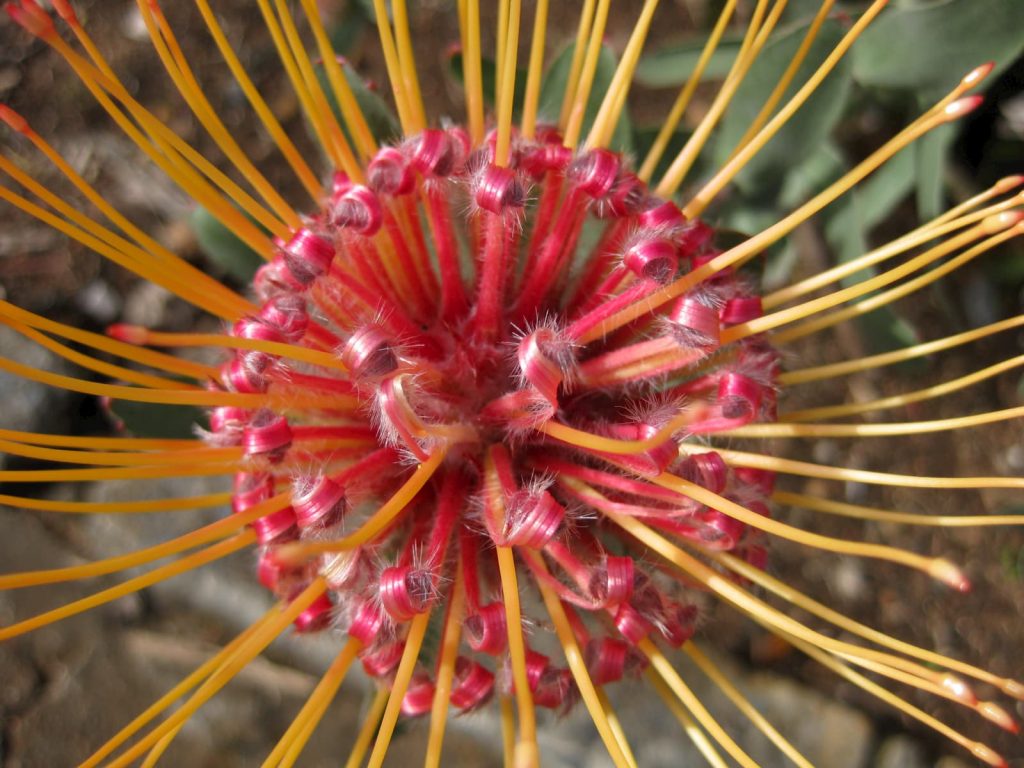

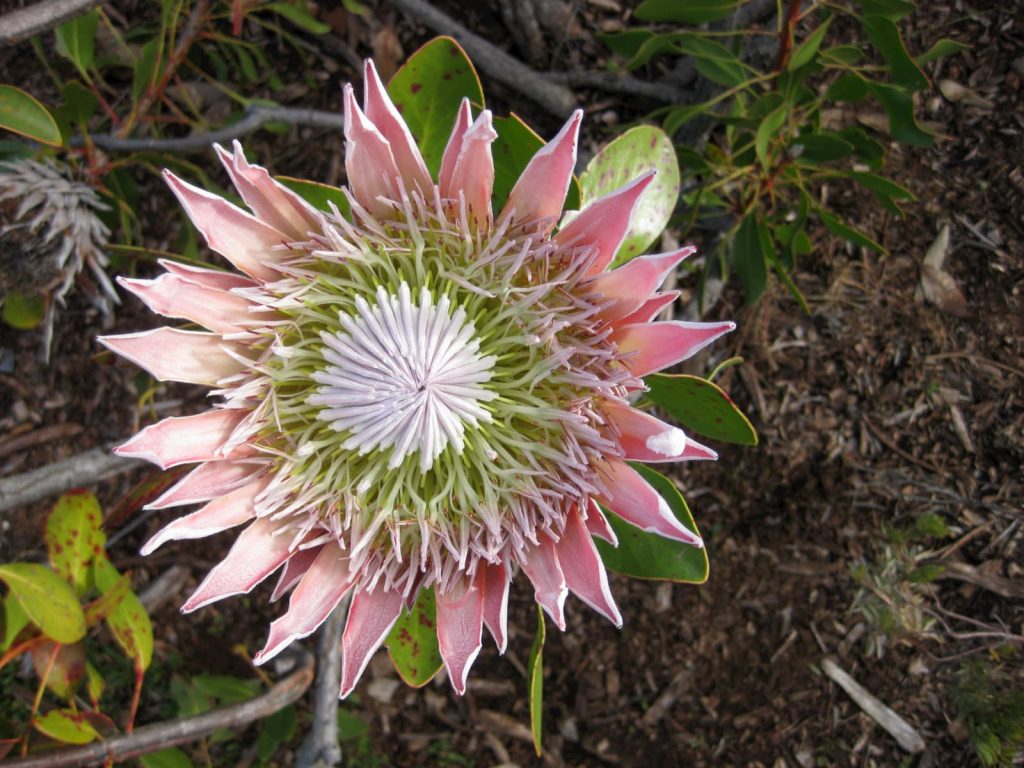

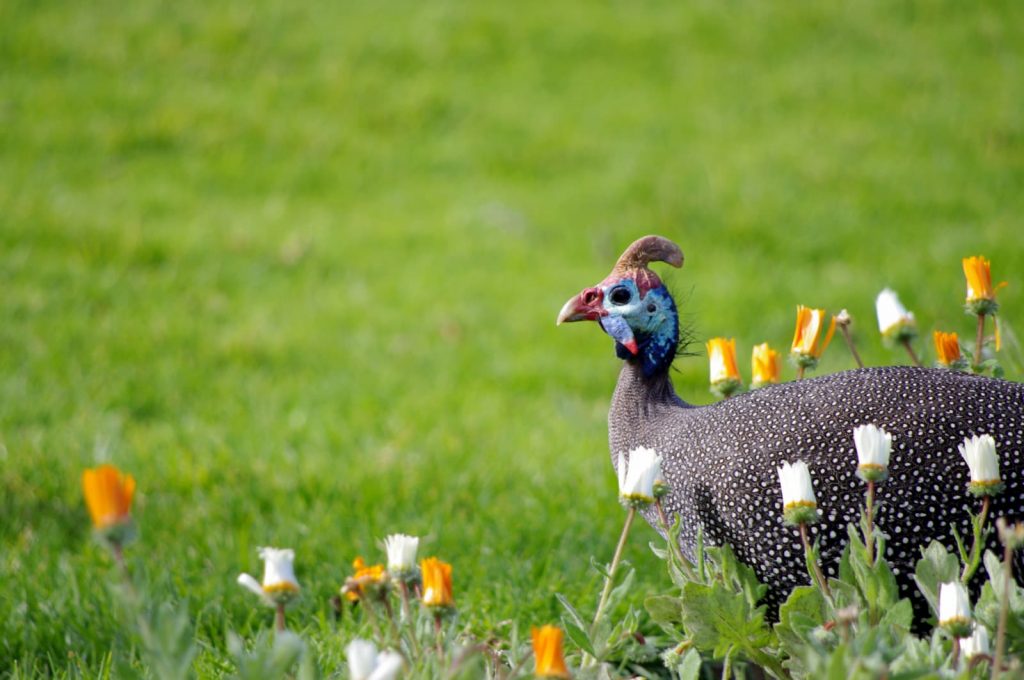

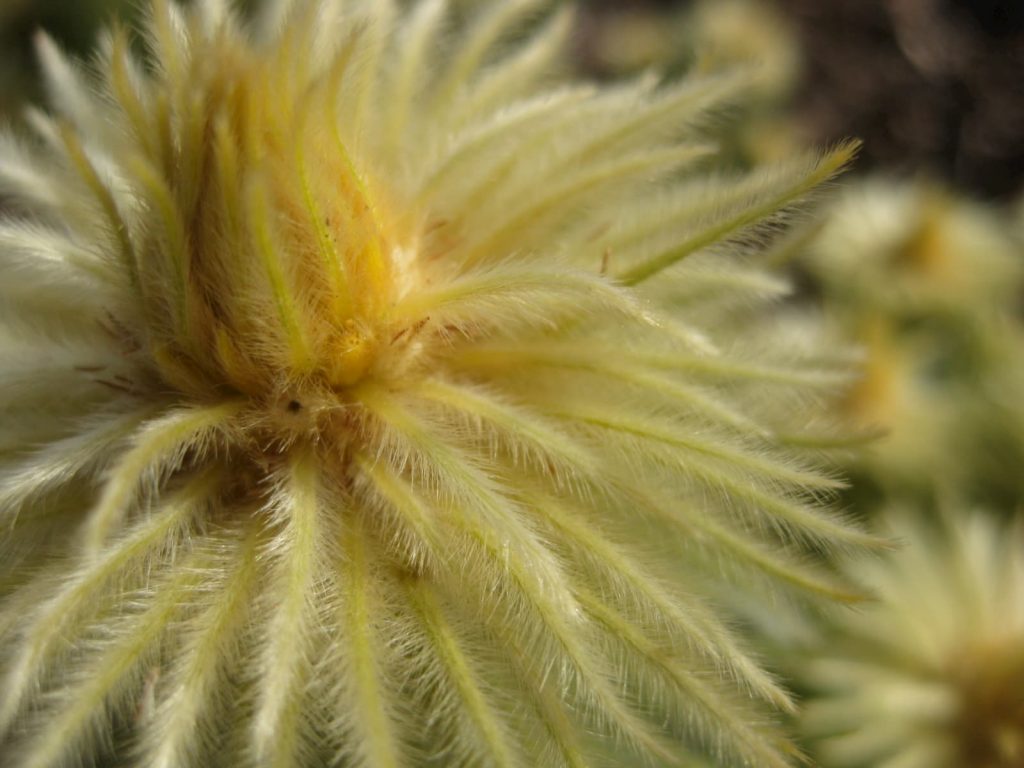

Bo-Kaap
Cool name, huh? Bo-Kaap is a vibrant, rainbow of a suburb that sits between the Cape Town city center and Signal Hill. It’s a multicultural neighborhood home to a mix of Malaysian, Indian, Sri Lankan, Indonesian and African descendants of slaves that were brought to Cape Town by a Dutch trading company during the 1500s and 1600s. Come wander through the cobbled streets and see the kaleidoscope of colorful homes that will surround you. What’s that wonderful smell? That’s the spiced aromas of curry and samosas cooking. Stop at some of the neighborhood restaurants or take a food tour and taste for yourself the vivid culture of the Bo-Kaap. There are also several mosques throughout the neighborhood as it is home to most of Cape Town’s Muslim population.
For more history on the Bo-Kaap, visit the Bo-Kaap museum which is located in the area’s oldest building. So why are the houses painted so colorfully? Well, I’ve heard about 4 or 5 different explanations. Everything from the slaves were illiterate and couldn’t read street numbers so they painted them to identify which house was which…to the former slaves’ painted them to celebrate their freedom…to residents painting them to celebrate the end of Ramadaan. So take it with a grain of salt or ask a local when you’re there. Maybe you’ll get a whole new reason we can add to the list!
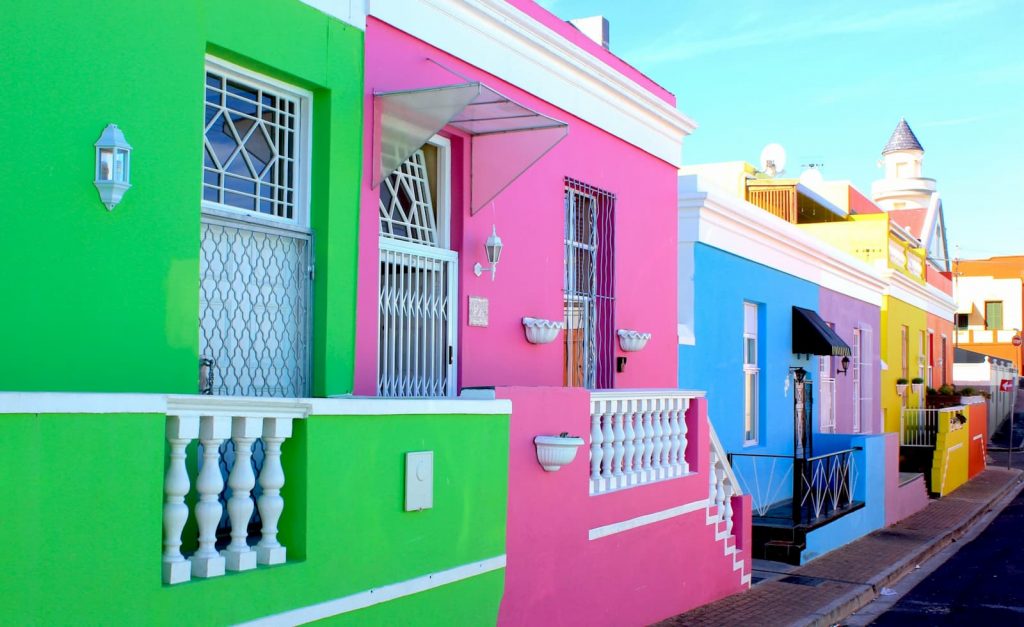
Camps Bay
Just a short 20 min drive from Cape Town you’ll find another great haven, Camps Bay. Here you will find a stunning white sand beach where both locals and tourists can be found enjoying picnics, sunbathing, swimming and even surfing in the shadows of the Twelve Apostles. One of the more popular suburbs of Cape Town, it also serves as a tourist hub and is home to an array of hotels and bed & breakfasts making it the perfect home base for travelers who want the quick proximity to the Mother City. When I first saw Camps Bay I asked how much the home prices were. After enjoying a sunset on the beach with the mountains glowing orange behind you, I bet you’ll be asking too!
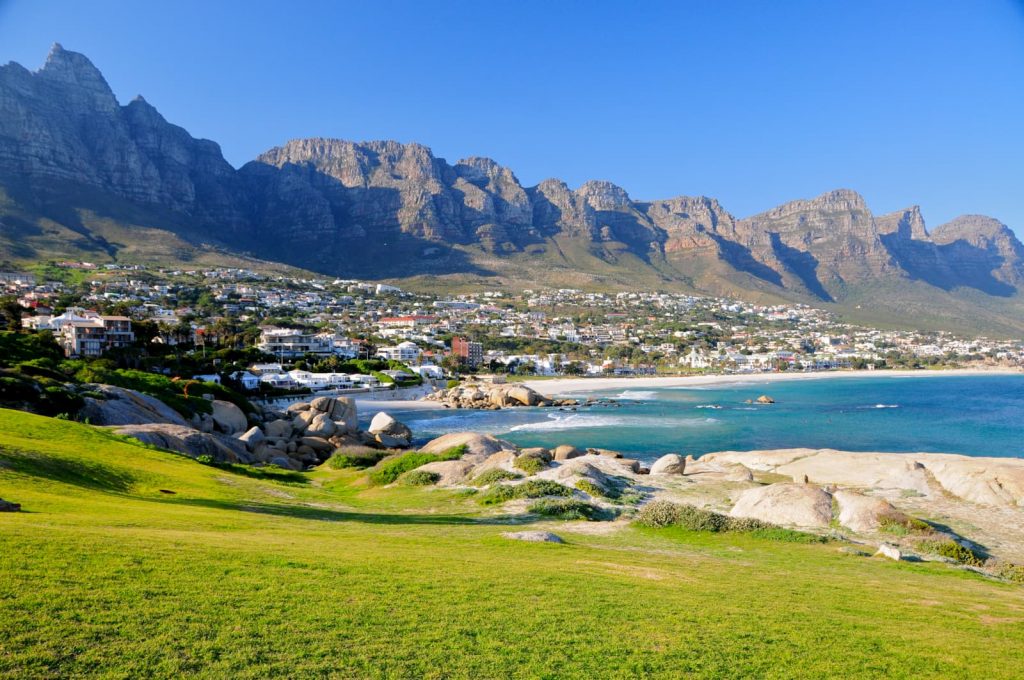
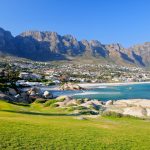
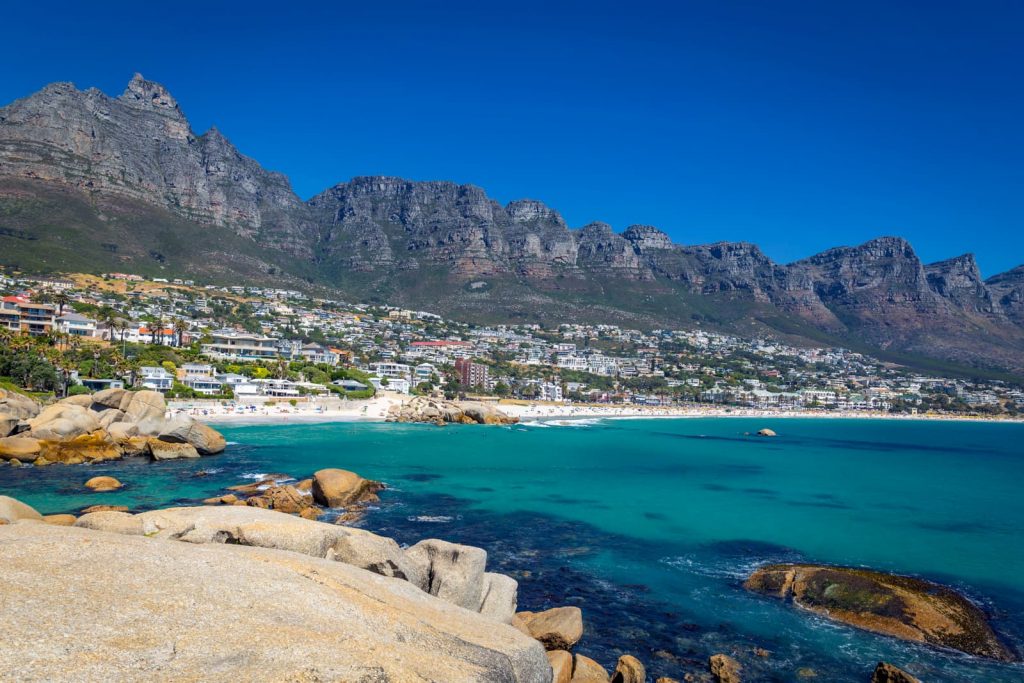
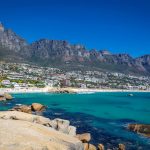
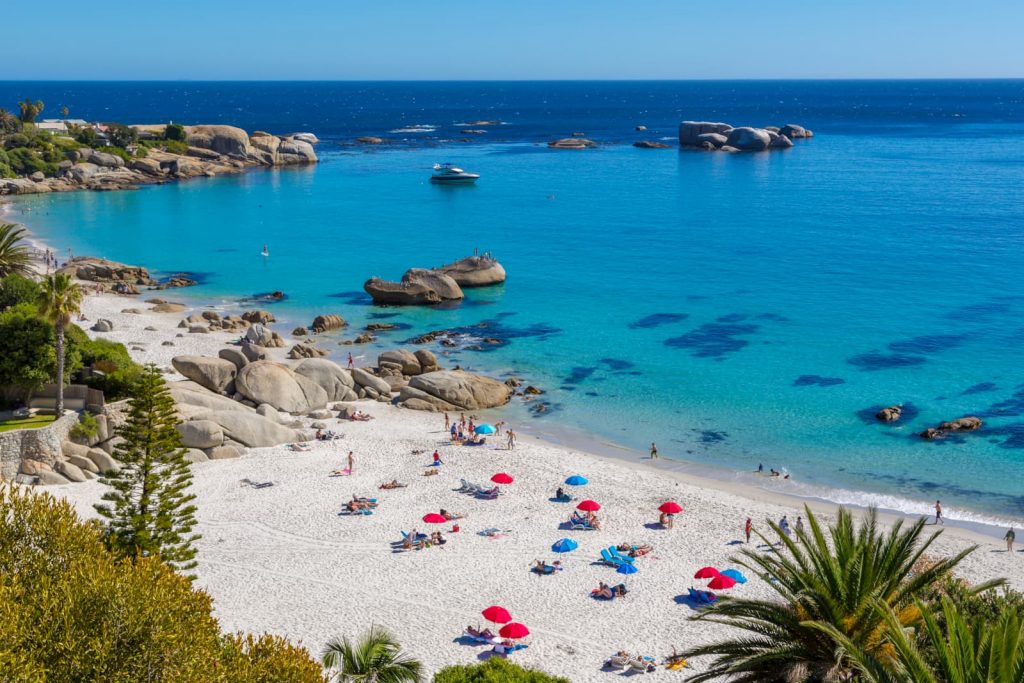

Townships
The townships are a remaining product of the racist apartheid system that lasted for over 40 years and clearly shows the socio-economic inequality that still exists in South Africa today. During apartheid, all of the races in South Africa were separated, and non-whites were forced to live in government designated areas (townships) on the outskirts of cities. Whites were sold the best land (including land that was taken from non-whites), and non-whites were faced with racism, segregation and lack of economic opportunity which plunged them into poverty. Even though apartheid has been gone since the early 1990s, the spillover effect of its policies and design are clear, mainly in terms of separate living areas and economic inequality. Click here to learn more about the Apartheid Museum
Many black South Africans in Cape Town still reside in the townships. It is striking and down right eye opening to see segregation in such close proximity. There are townships that border wealthy suburbs and even a golf course. See for yourself. You will see the townships that line the highway on your way to and from the Cape Town airport. Life is not easy in the townships. Rows and rows of small, makeshift shacks with metal roofs being held down with large rocks and dirt floors, many times with three generations cramped in each. Some townships are in better shape than others, and the situation is desperate in some areas. Some don’t have running water, and electricity can be hit or miss. Unemployment, crime, disease and anger are not uncommon as a result of the living conditions and separation, and there is a great need for urban reform.
So why would you want to visit the townships? You may be experiencing some anxiety or uneasiness around this question. Yes, there are some elements of the townships that are disheartening but there is another side to the townships that is beautiful. Against all odds, you will also find hope and happiness. Throughout the townships, there is such a strong sense of community, and people who have nothing still give what they do have to help others, a strong testament to their character. The resourcefulness of the people to rely on each other for survival brings the whole community to get her and brings hope. There is a saying that “those who have less are happier than those who have more.” By living on very little people can focus on relationships with the people around them instead of on things, which strengthens the bond of the community. I think we can all learn from that. The culture is also deeply rooted in music, which is as natural as breathing, and my goodness is it beautiful. People can break into song at any moment, and it will have you mesmerized. Through the darkness there is light. The human spirit that endures here illuminates the soul of the townships, and it is truly remarkable to experience.
Visiting the townships offers a window into the lives of the black South African people and can help educate visitors about the lingering effects of segregation and socio-economic inequality that South Africa still faces. It can also help us pause………..and not take for granted what we have while also helping us remember what’s really important in life-not material things and wealth but love and people. Happiness is a choice. These people face it every day and so do you. What will you choose?
I highly encourage you to visit the townships (guided day tours are available in Cape Town and to Soweto in Johannesburg), not only for the unforgettable experience but to also help grow the local economies. Tourism provides economic opportunity for the people in the townships and with that comes increased hope. I can almost guarantee that you will also grow as a person. Social interaction is key as it brings us all closer together because, as Nelson Mandela said, “we are one people.” How can you help? If you are interested, any donation to the township communities is graciously welcomed. Hopefully, we can all come together and do our part to help move this society closer to a more fair and equal existence.
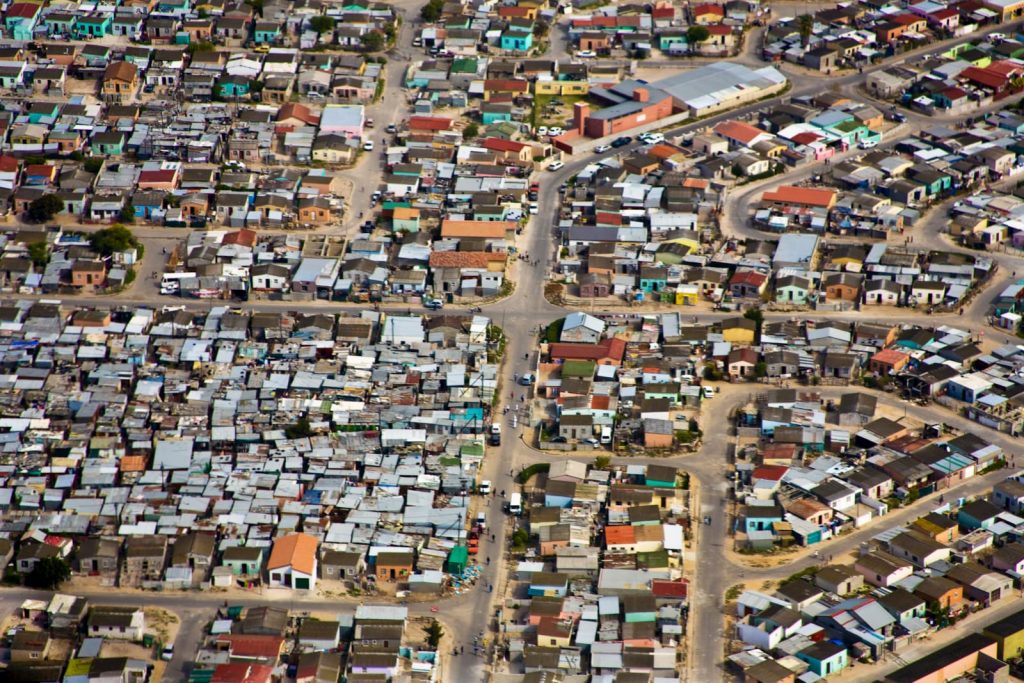

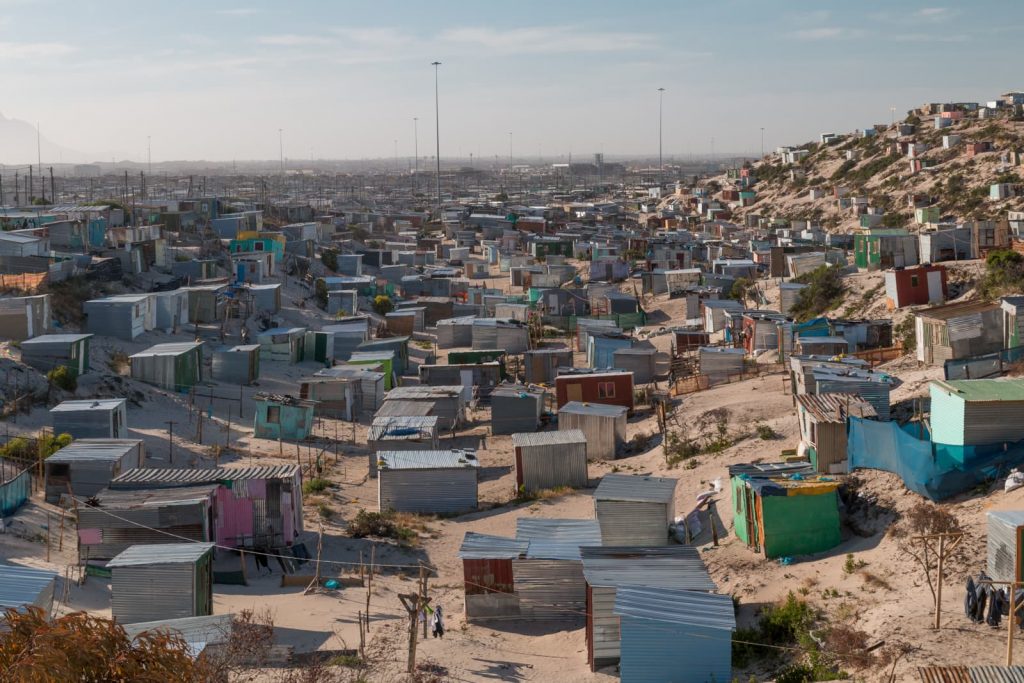

Climate
- South Africa has a temperate, Mediterranean-like climate but can get hot in the summer. Overall, it is a great place to visit all year long. Seasons are opposite here from the northern hemisphere with summer being November to February, autumn being March to April, winter being May to August and spring being September to October. Wondering when the best time to visit South Africa is?
Temperature Ranges & Rainfall
Scroll
Cape Town
| JAN | FEB | MAR | APR | MAY | JUN | JUL | AUG | SEP | OCT | NOV | DEC | |
|---|---|---|---|---|---|---|---|---|---|---|---|---|
| HIGH - C | 26 | 27 | 25 | 23 | 20 | 18 | 18 | 18 | 19 | 21 | 24 | 25 |
| LOW - C | 16 | 16 | 14 | 12 | 9 | 8 | 7 | 8 | 9 | 11 | 13 | 15 |
| HIGH - F | 79 | 79 | 77 | 73 | 68 | 64 | 64 | 64 | 66 | 70 | 75 | 77 |
| LOW - F | 61 | 61 | 57 | 54 | 48 | 46 | 45 | 46 | 48 | 52 | 55 | 59 |
| RAINY DAYS | 3 | 2 | 3 | 4 | 7 | 9 | 9 | 9 | 7 | 6 | 5 | 4 |
When to Go
- High season (Nov - March)
- Shoulder season (April - May & Sept - Oct))
- Low season (June - Aug)
| Safari: Game is easiest to spot during these months. Cape Town: Best time for beach and outdoor activities. | |
| Hot. Green scenery & baby animals. Outdoor activities. |
Scroll
| JAN | FEB | MAR | APR | MAY | JUN | JUL | AUG | SEP | OCT | NOV | DEC | |
|---|---|---|---|---|---|---|---|---|---|---|---|---|
| CAPE TOWN | ||||||||||||
| SAFARI |
**IMPORTANT for travelers under age 18**
- Children under the age of 18 traveling to/from South Africa are required to produce (in addition to their passports) an unabridged birth certificate (showing both parents’ particulars).
- If a child is traveling with just one parent, the child is also required to provide (in addition to their passport) a stamped affidavit from the other parent listed on the child’s birth certificate consenting to the travel or a court order granting full parental responsibilities, or legal guardianship of the child, or the death certificate of the absent parent. The affidavit should be no more than 4 months old from the date of travel.
- For any child traveling with a person other than their parents, they must be in possession of the child’s passport, an unabridged birth certificate for the child, an affidavit from the parents or legal guardian of the child confirming that he or she has permission to travel with the child, copies of the identity documents or passports of the parents or legal guardian of the child and the contact details of the parents or legal guardian of the child.
Drive Times
- To Durban – 5.5 hours
- To Port Elizabeth – 8.5 hours
- To Johannesburg – 13.5 hours
- To Pretoria – 14.5 hours
- To Madikwe Game Reserve – 15 hours
- To Pilanesberg Game Reserve – 15 hours
- To Kruger National Park – 18 hours
Dining
Cape Town is not known for having many traditional South African restaurants but rather has a collection of international cuisine as well as several seafood and steakhouse restaurants. Here are links to some of the best restaurants in Cape Town:
http://www.eatout.co.za/article/best-of-cape-town-2/
https://www.travelandleisure.com/travel-guide/cape-town/restaurants
